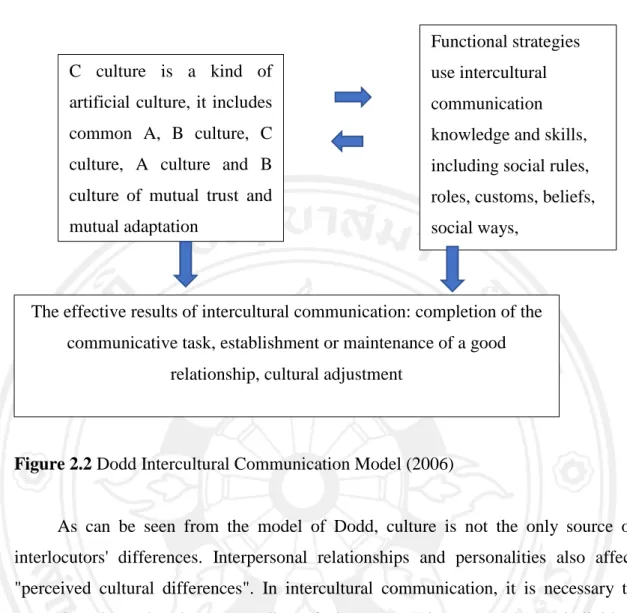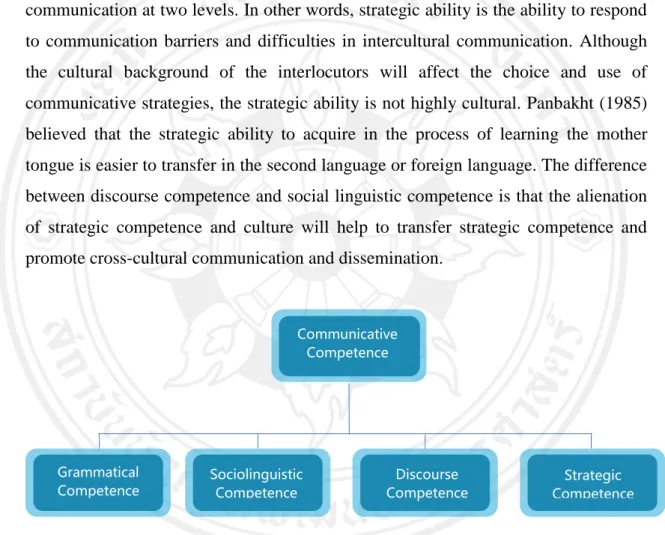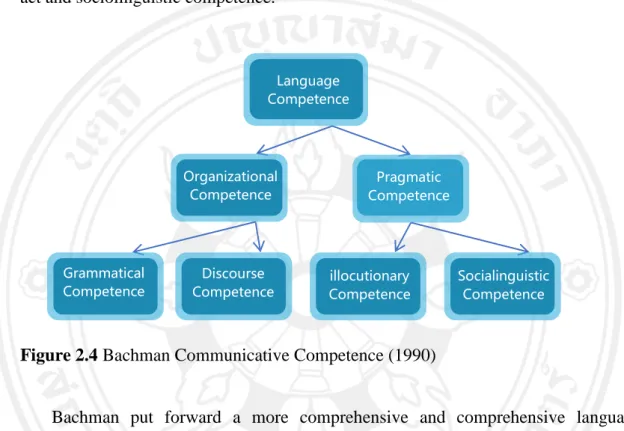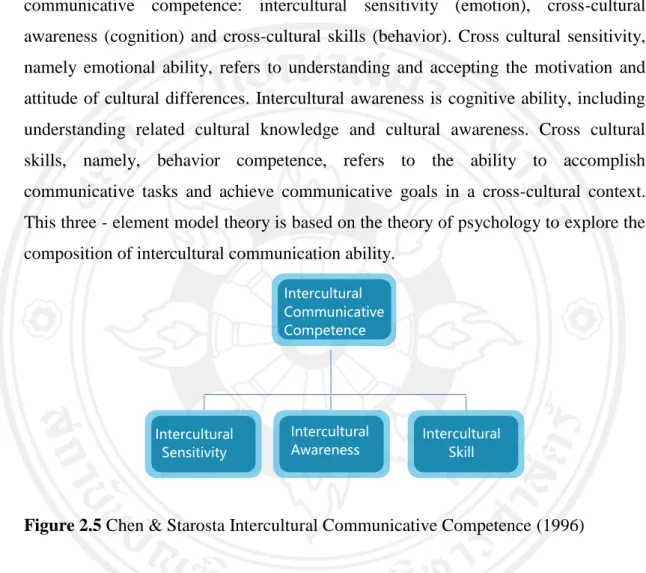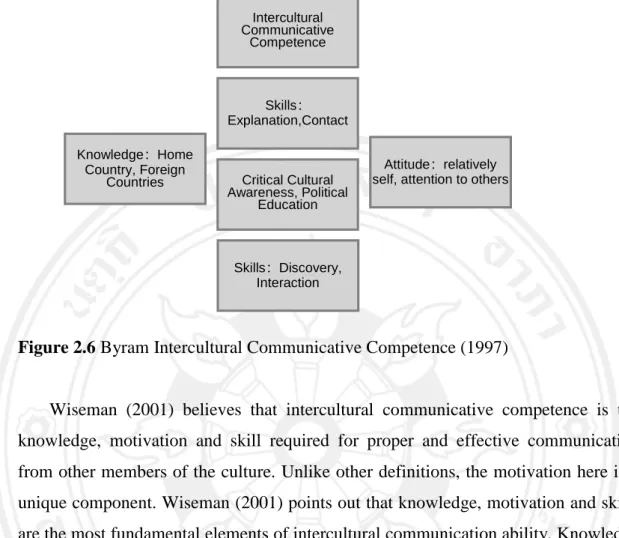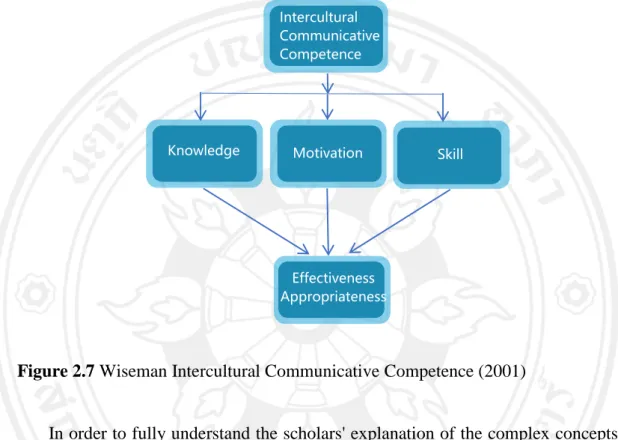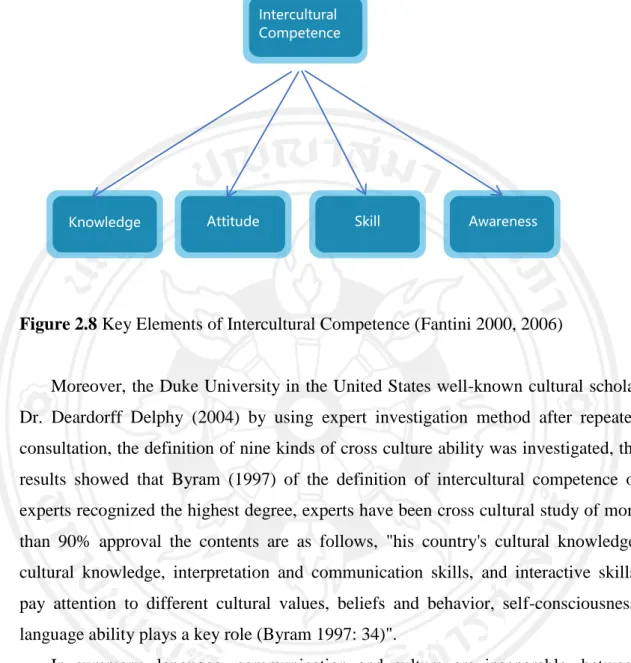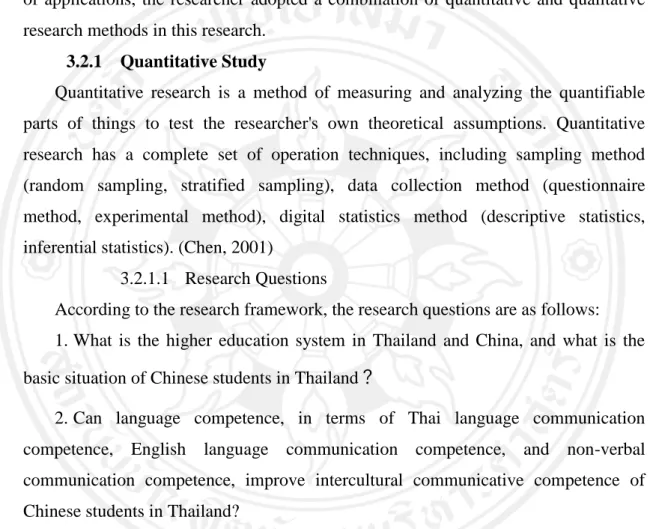INTRODUCTION
Background of the Study
Significance of the Study
Objectives of the Study
Scope of the Study
Expected Results
LITERATURE REVIEW
Theoretical Review
- Culture
- Language
- Intercultural Communication
- Communicative Competence
He also emphasized that communicative competence consists of the following elements: (1) the grammar of language use, if (and how) accurately; (2) the appropriateness of the use of language, whether (and how much) to meet the appropriate feasibility; (3) appropriateness of language use, if (and extent of ritual customs); (4) the reality of language use, whether (and how many) realistic scenarios. Among them, awareness is the most important and key dimension of the development of intercultural competence.
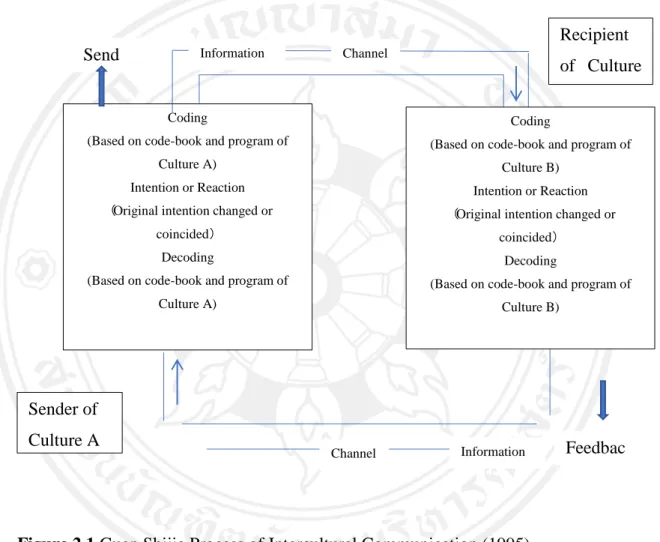
Intercultural Communication Theory
System theory is characterized by its broad consideration of the interaction and interrelation between elements of communication in the meaning of an event. The theory states that reality does not exist in the objective world, but is the subjective feeling and experience of people. If we overemphasize objective rules, this will inevitably lead to neglecting the subjectivity of human beings.
To understand communicative behavior, researchers must begin by understanding the communicator's perception of events.
Methods in Intercultural Communication Research
The perceptual method tries to determine a group of attitudes (attitude) or perception (perception) related to intercultural communication. Such as the ability to manage psychological stress and the ability to establish good relationships with others. It is not important what the interlocutor wants to do, but how he does it in the actual situation.
Unlike the first two methods, this method is to identify certain behaviors and perceptions of certain communicators in specific culture, and to place research in specific culture. Researchers using this method will include some important rules that involve culture in a series of communicative events, so that the communicator can choose the most appropriate behavior from the options.
Research Results in China and Other Countries
Understanding the political situation in the home country and the host country will help improve the ICC of Chinese students in Thailand.”; the average score was at the lowest level (3.44). As a consideration of the item in the questionnaire, the English communication skills that the students rated as the most average, item 22 is “Mastering the vocabulary of English language skills will help improve the ICC of Chinese students in Thailand.”; the. Mastering the pragmatic knowledge (appropriate knowledge in different situations) of the English language will help improve the ICC of Chinese students in Thailand.”; the average grade was at the lowest level (3.40).
Communicating actively with the local people and making friends with the local people will help improve the ICC of Chinese students in Thailand.”; the average score was at the lowest level (3.99). Allowing others' views to be different from ourselves will help improve the ICC of Chinese students in Thailand."; the mean score was at the lowest level (2.03).
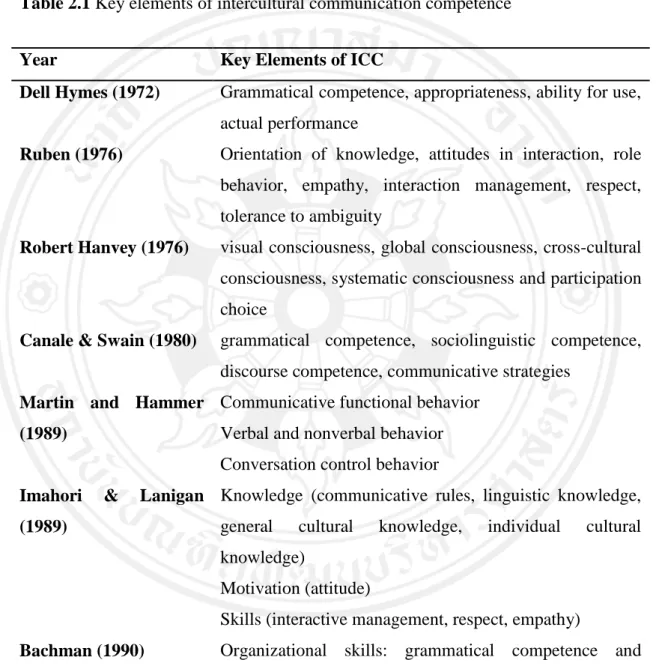
RESEARCH METHODOLOGY
Research Framework
To study the ways to improve intercultural communicative competence, we must first know what knowledge, skills, attitudes, strategies and other key elements are necessary for successful intercultural communication. The purpose of this study is to investigate how to improve Chinese students' intercultural communicative competence in Thailand. The researcher will first analyze the principles, characteristics and relationships of intercultural communication; then study the framework of previous research in intercultural communication in China and other countries; therefore analyze the results of empirical research; therefore explain the relationships between all the key elements of intercultural communicative competence and main factors affecting Chinese students' intercultural communicative competence in Thailand; finally gives suggestions to improve Chinese students' intercultural communicative competence in Thailand.
Research Method
- Quantitative Study
- Research Questions
- Population
- Sampling Procedure
- Research Instrument
- Data Collection
- Data Analysis
- Qualitative Study
- Research Subject
- Interviewees
- Research Instrument
- Data Collection
- Data Analysis
Understanding the knowledge of the social customs of both countries will help improve the ICC of Chinese students in Thailand. Understanding the knowledge of the process of social activities in both countries will help to improve the ICC of Chinese students. As a consideration of the item in the questionnaire, the cultural knowledge that the students acquired was the most average, item 8 “Understanding the education system of the home country and the host country will help to improve the ICC of Chinese students in Thailand.”; average.
Understanding the social activities process knowledge of home country and host country will help to improve the ICC of Chinese students in Thailand. The ability to understand different interpretations of the same phenomenon will help improve the ICC of Chinese students in Thailand.
RESEARCH FINDINGS
The Higher Education System of Thailand
Due to people's urgent demand for higher education in the 1960s, some private universities emerged to co-exist with the government-dominated public institutions. A country's higher education policy determines the speed, scale, direction and level of higher education development. It provided higher education opportunities for a large number of students who did not attend college.
With the rapid and balanced development of Thailand's economy and society, the internationalization of higher education in Thailand has gradually increased. Currently, the UNESCO Asia Pacific Center, the Organization of Ministers of Education of Southeast Asia and the Regional Center for the Development of Higher Education and Regional Education Centers have opened offices in Bangkok.
The Higher Education System of China
With the deepening of the process of internationalization of higher education, the internationalization of higher education in Thailand has gradually formed and embodies its own characteristics, mainly in the following aspects: the internationalized administration, the internationalized curriculum, the internationalized teaching methods and the internationalized talent training. China has increased the proportion of its college-aged people in higher education to over 20 percent now from 1.4 percent in 1978. Higher education in China is centered on a system of 2,000 universities and colleges with more than six million students.
However, the higher education system does not meet the needs of 85 percent of the university-age population. This assessment resulted in the 'massification' of higher education with a renewed emphasis on elite institutions and education through initiatives such as Project 985 in the late 1990s and the Thousand Talents Program which was launched in 2008.
The Basic Situation of Chinese Students in Thailand
International students study business administration, marketing management and Thai language and education at 44 universities across Thailand. In 2008, the Office of the Higher Education Commission conducted a survey on the enrollment of foreign students in Thai higher education institutions. The top five institutions with the largest enrollment of foreign students are Assumption University (2558 students), Chulalongkorn University (1329 students), Mahidol University (1069 students), Burapha University (591 students) and Rangsit University (487 students).
The popular courses of study among foreign students are Thai Language, Business Administration, English Language and International Business and Marketing. In 2016, there were more than 12,000 Chinese students in Thailand, almost ten times more than in 2001, and China has become the largest source of foreign students in Thailand.
Statistical Findings and Analysis
- Analysis Measurement on Stress Level of Cultural Awareness
- Analysis Measurement on Stress Level of Cultural Knowledge
- Analysis Measurement on Stress Level of Intercultural Practice
- Analysis Measurement on Stress Level of Thai Communication Skills
- Analysis Measurement on Stress Level of English Communication
- Analysis Measurement on Stress Level of Non-verbal Communication
- Analysis Measurement on Stress Level of Sensitivity to Cultural
- Analysis Measurement on Stress Level of Flexibility to Cultural
- Analysis Measurement on Stress Level of Tolerance to Cultural
Mastering the vocabulary knowledge of Thai language will help improve the ICC of Chinese students in Thailand. Mastering the grammatical knowledge of Thai language will help improve the ICC of Chinese students in Thailand. Mastering pragmatic knowledge (the appropriate knowledge in different situations) of Thai language will help improve the ICC of Chinese students in Thailand.
Mastering the vocabulary knowledge of English language will help improve the ICC of Chinese students in Thailand. Mastering pragmatic knowledge (the appropriate knowledge in different situations) of the English language will help improve the ICC of Chinese students in Thailand.
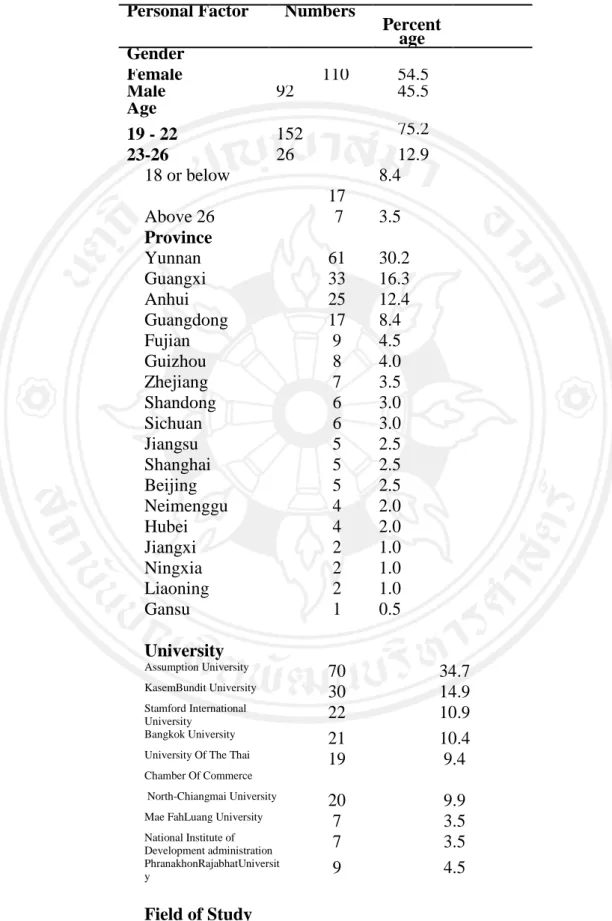
Analysis of the Results of In-depth Interview
- The Importance of Intercultural Communicative Competence
- Analysis of the Composition of Intercultural Communicative
- Ways to improve Intercultural Communicative Competence
In terms of competence, 100% of interviewees believed that language skills are the basis of intercultural communication. In summary, the results of the in-depth interviews with intercultural people and intercultural communication surveys show that the interviewees all emphasize the comprehensiveness of intercultural communicative competence. The lack of any of these skills will affect the achievement of intercultural communication competence.
On the contrary, in the process of intercultural competence, the cultivation of the four elements should be carried out at the same time. Universities should help Chinese students improve their Thai language skills before the formal opening of class.
CONCLUSION AND SUGGESTIONS
Summary of the Research Findings
The main objective of this study is to discover a way to improve the intercultural communication competence of Chinese students in Thailand. Regarding the cultural background, the students agree that understanding the knowledge of social communication etiquette, taboos, social customs, daily habits and their influence, and the process of social activities in both countries will help improve the intercultural communication competence of Chinese students in Thailand. Students agree that understanding the historical knowledge, religious knowledge, education system and political situation in both countries will help improve the intercultural communication competence of Chinese students in Thailand.
Students agree that the mastery of phonetic knowledge, vocabulary knowledge, grammatical knowledge, pragmatic knowledge and popular proverb of the English language will help to improve the intercultural communication competence of Chinese students in Thailand. Intercultural communication ability includes not only direct and indirect factors, but also complementary and alternative functions between elements, and the problems of intercultural communication in intercultural communication are mainly the result of language barriers and cultural differences.
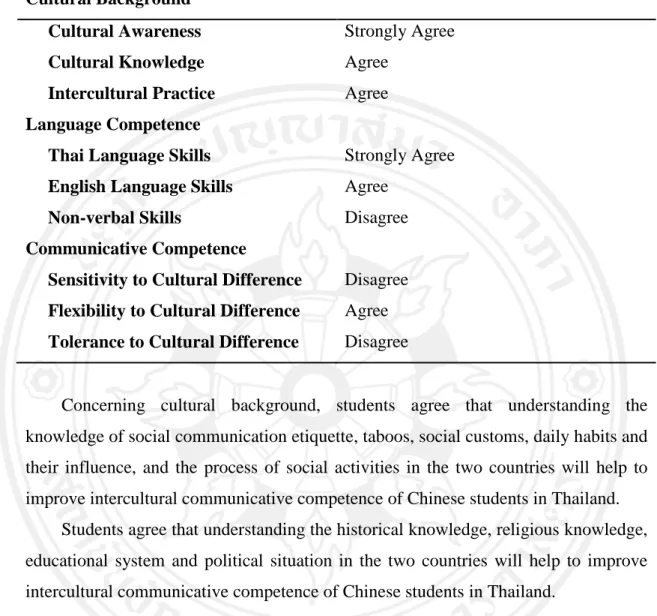
Discussions
At the competence level, intercultural communication is a comprehensive ability, language skills are the basis for intercultural communication. The model shows that intercultural communicative competence is composed of intercultural awareness, intercultural adaptation, intercultural knowledge and intercultural practice. At the same time, there is a hierarchical relationship between the four elements: intercultural awareness is the most basic ability in intercultural communication.
Without the sensitivity and understanding of intercultural awareness, intercultural adaptation and intercultural knowledge cannot be learned and mastered. Based on intercultural awareness, the ability to cultivate psychological adaptation and flexibility will be beneficial to the effective completion of intercultural communication.
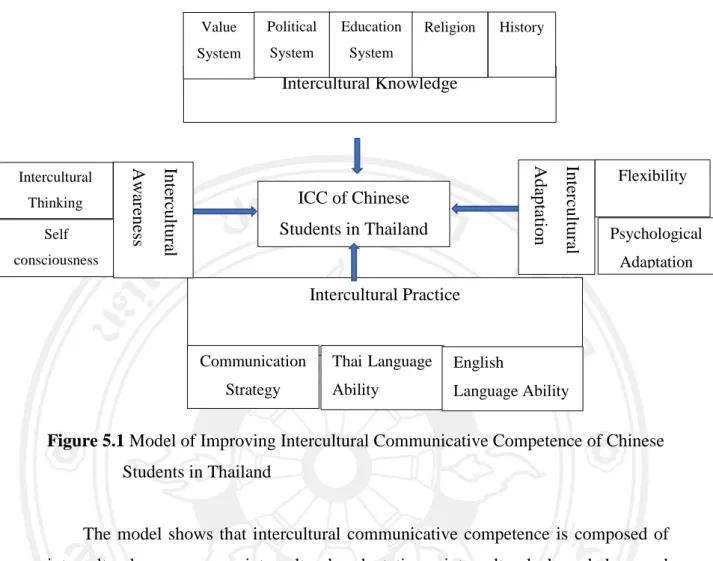
Recommendations on Academia and Policy
- Recommendations on Academia
- Recommendations on Policy
Based on the research results, there are different degrees of difficulty and problems in cross-cultural adaptation for Chinese students in Thailand. Therefore, it is an important strategy to alleviate the academic adjustment problems by establishing the academic support system for Chinese students. By improving financial aid and scholarship policy, it will help to enrich the source of funding, improve their motivation and improve academic adjustments of Chinese students in Thailand.
Language training should be expanded and standardized to improve Chinese students' language abilities and promote social cultural adjustment and academic adjustment. Therefore, improving language training and improving students' language skills will be beneficial to the social adjustment and academic adjustment of Chinese students in Thailand.
